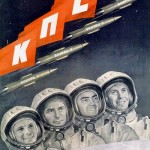Hallmarking silver in the USSR how to read the signs on the marking

Assay Office building in Moscow. Hallmarking silver in the USSR.
Hallmarking of silver in the USSR has changed more than once in its history. Immediately after the revolution of 1917, most of the jewelry factories and workshops were closed in Russia. Fearing robberies, the owners of large and small enterprises fled abroad. Assay offices, which were previously engaged in hallmarking silver, ceased their work with the coming to power of the Bolsheviks.
Hallmarking of silver at the dawn of the USSR was of little concern to the Soviet government. The main goal of the authorities was the requisition of jewelry and their further sale abroad, since the state needed funds to finance the world revolution. The first steps to put things in order in the jewelry business were made in 1918, when a commission formed under the Council of People’s Commissars assumed control functions.

Tested on a silver cup holder
Development of a new hallmark system
Hallmarking of silver until 1927 in the USSR was carried out according to the rules introduced by the assay charter of tsarist Russia. The document was adopted in 1896, but became mandatory three years later. The purity of silver was certified by a stamp in the form of a woman’s head in a kokoshnik, enclosed in shields of various shapes round, rectangular, oval or in the form of a hammer.
A number indicating the sample was placed next to the image, and the first letters of the initials of the head of the assay district could also be affixed. In 1908, a change was made to the marking the female profile was turned to the right, and the district began to be designated with a Greek letter.
Pre-revolutionary hallmarks were used at all enterprises that opened after the October Revolution. In 1918, a platinum plant was opened in Moscow, created on the basis of the former factory of I.P. Khlebnikov, it produced products intended for the needs of the chemical and electrical industries, as well as a small amount of silver tableware spoons, forks and coasters. The products were additionally marked with the “Platinopribor” stamp.

Stamp with a worker’s head and a three-digit breakdown
In the 1920s, handicraft jewelry workshops were engaged in the manufacture of jewelry
Their number increased after the People’s Commissariat of Finance allowed the free sale of jewelry. In 1923, the Moscow Jewelry Association (MYUT) was organized, which was entrusted with the responsibility of controlling the production and sale of items made of gold and silver.
All products of the period 1923-1926 came out with the marking “MYuT”. After the revolution, only three assay offices worked for a long time in Moscow, St. Petersburg and Kostroma, after 1924 their number increased to fourteen. Precious metals began to be weighed and counted in metric units instead of spool units, and silver samples changed their values from two-digit to three-digit.

Stamp of the plant Platinopribor
In 1927, a new branding system was adopted, which was in effect for the next thirty years.
Silver items produced in the country met the same requirements: they corresponded to the officially established sample and were marked with the hallmark of a certain institution of assay supervision. The authenticity of the product was confirmed by a relief or linear image of the profile of a worker holding a hammer on his shoulder. The cipher of the organization was added to the drawing each assay institution was assigned a certain letter of the Greek alphabet, which was sometimes replaced by symbols in various combinations.
In 1936, the All-Union Office was created to regulate the sale and production of jewelry, replacing Mostorg. Jewelry factories were opened in the capitals of the Union republics, marking their products with brand names. Artels and industrial plants, which appeared in large numbers in the 1930s, did the same.
Since 1953, the last digit of the year of manufacture of the product began to be added to the name of the manufacturer. For example, the combination “ТЗ0” meant that the item was made at the Tallinn Jewelry Factory in 1960. In cases where the letters in the names of enterprises were the same, to determine the place of production, one should look at the code of the assay inspection.

Silver coaster Soviet space
Hallmarks on silver after 1958
In June 1958, the branding system was revised again. The design was changed to a hammer and sickle placed inside a five-pointed star. Until 1965, the drawing was convex, but then it became mortise it was easier to make such a stamp again in case of severe wear of the thing and its subsequent restoration. The code of the assay organization was designated in Russian letters, sometimes it was applied in the form of strokes and dots in certain combinations.
The main features of the Soviet stigma:
- a Cyrillic letter denoting an assay office;
- a convex or flat star with a hammer and sickle;
- sample number;
- rectangular shield with oval edges.

Hallmark on silver sample 1908
In 1969, the last digit of the year was moved to the beginning of the manufacturer’s name sign. For example, the combination “3LU” meant that the product was produced at the Leningrad Jewelry Factory in 1973. In the 1950s, the Moscow Mint stamped “MMD” and the letter “R” in a round shield on restored items.
In the second half of the 1970s, the Soviet jewelry industry was a system of large enterprises equipped with modern equipment. Factories produced a wide variety of silver products: jewelry, dishes and souvenirs with enamel, niello and precious stones.
In order to further develop and improve production in 1976, all enterprises were merged into Soyuzyuvelirprom. This fact did not affect the hallmark system on silver it remained unchanged until 1994.

Hallmark after 1958





